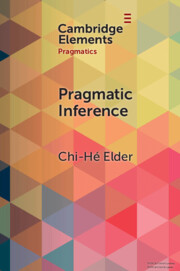Element contents
Pragmatic Inference
Published online by Cambridge University Press: 19 March 2024
Summary
Information
- Type
- Element
- Information
- Series: Elements in PragmaticsOnline ISBN: 9781009036672Publisher: Cambridge University PressPrint publication: 21 March 2024
References
Accessibility standard: Unknown
Why this information is here
This section outlines the accessibility features of this content - including support for screen readers, full keyboard navigation and high-contrast display options. This may not be relevant for you.Accessibility Information
- 11
- Cited by
